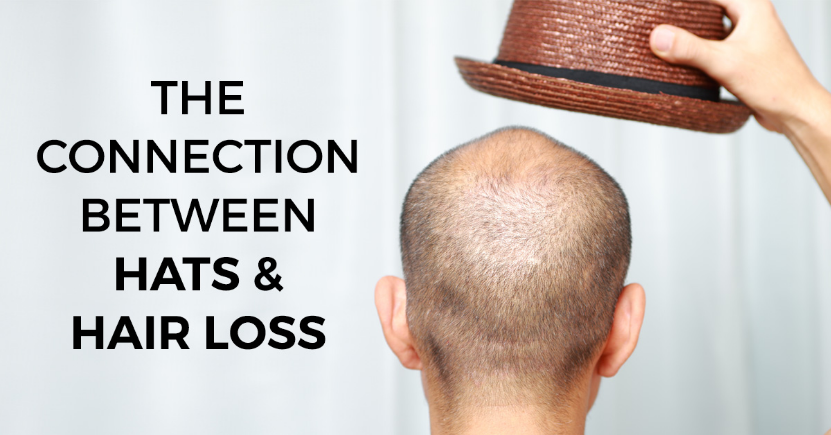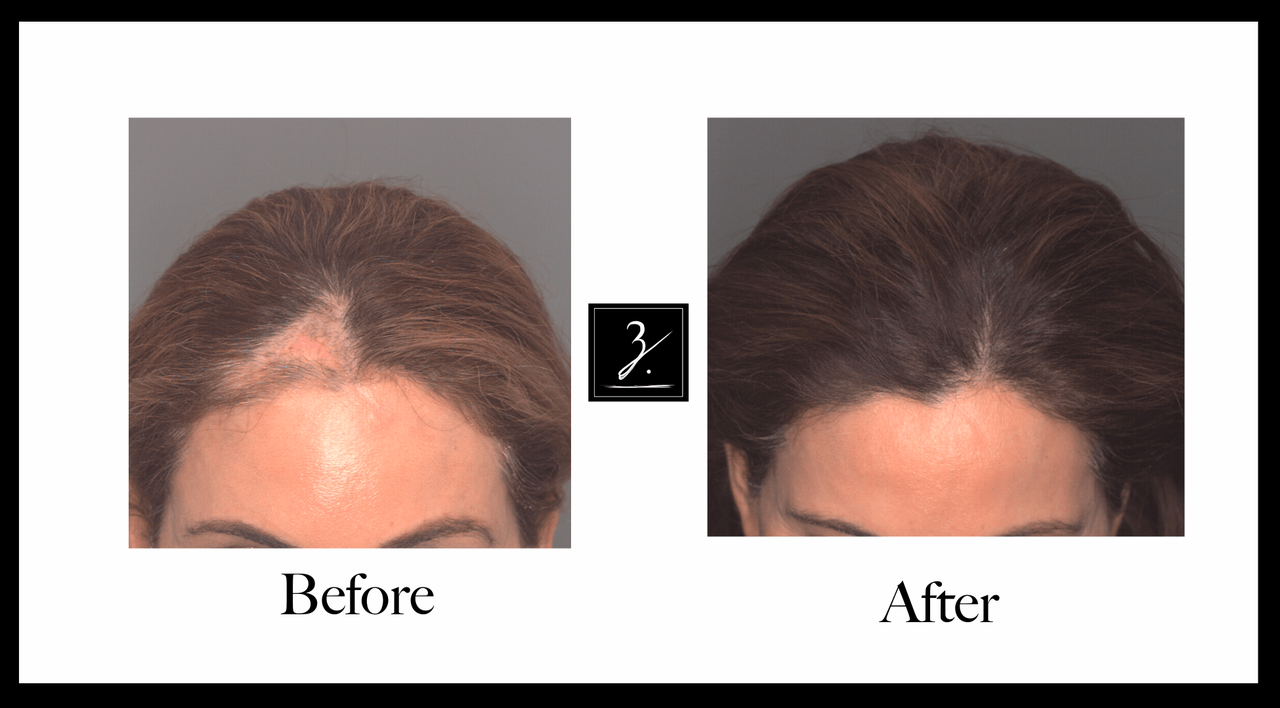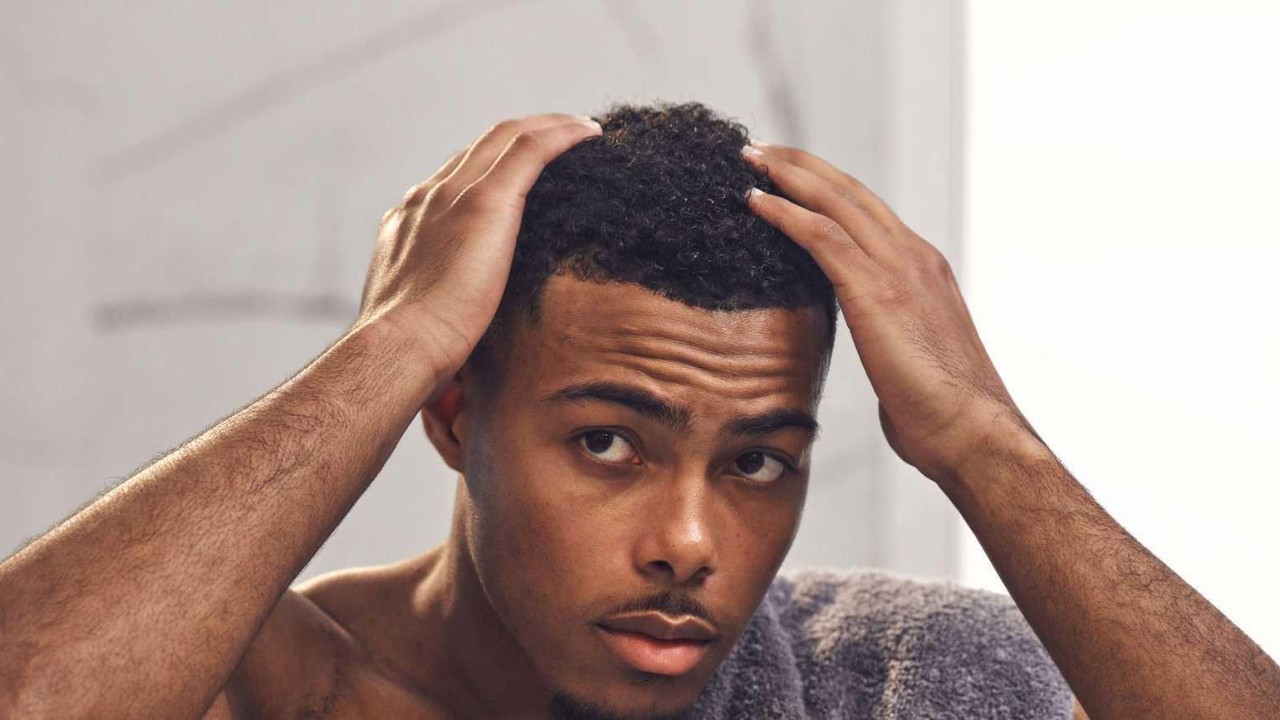Hair loss is a phenomenon that transcends age, gender, and culture, touching the lives of millions worldwide. From subtle thinning to profound baldness, the impact of losing one’s hair extends far beyond the physical realm, often delving into realms of self-esteem, identity, and emotional well-being. In recent years, the discourse surrounding hair loss has evolved significantly, shedding light on its multifaceted nature and the diverse array of factors that contribute to its occurrence.
Ultimately, this preface serves as a gateway to a deeper exploration of hair loss—an invitation to embark on a journey of discovery, empathy, and empowerment. As we navigate the terrain of hair loss together, may we gain not only knowledge but also compassion for those whose lives are touched by this ubiquitous yet often misunderstood condition.
Hats effortlessly blend utility with flair, adding an instant touch of style to any outfit. Whether it’s the timeless sophistication of a fedora or Panama hat, or the casual coolness of a baseball cap, there’s something irresistible about donning headgear. But, if you’re discovering stray hairs lingering in your hat, you might find yourself pondering: does rocking headwear lead to hair loss or even baldness? Dive into the research with us to uncover the truth.
Do hats cause hair loss?
Traction alopecia, a condition characterized by hair loss due to prolonged and intense pressure on the hair follicles, can be triggered by various factors, including tight hairstyles like ponytails, braids, or extensions. Surprisingly, it can also be provoked by consistently wearing snug headgear, whether for religious obligations, professional requirements (like hard hats or helmets), or even fashion preferences.

The manifestation of hair loss can vary depending on the type of headwear or hairstyle involved. For instance, a study of female nurses revealed that over 3% experienced hair thinning precisely where their nurse’s caps were secured. Individuals sporting tight ponytails or buns might notice hair loss around the front of the scalp and near the ears, while those using weaves could encounter patchy areas or distinctive horseshoe patterns of hair loss.
Research indicates that about one-third of women of African descent who adopt these tight hairstyles may suffer from traction alopecia. Moreover, certain professions and activities notorious for stringent hair styling, such as ballerinas, gymnasts, and military personnel, might exhibit elevated rates of this condition compared to the general population.
However, despite these findings, there’s no definitive proof linking hats directly to hair loss or baldness. Even in cases of traction alopecia, wearing a hat extremely snugly and for prolonged durations would likely be necessary for it to contribute to hair loss, if it does so at all. For instance, a study involving Muslim women who wore hijabs for seven hours daily found that one-third reported hair loss, primarily focused along the front of the scalp.
The silver lining is that early detection of traction alopecia allows for hair restoration by alleviating the tension on the hair. Those wearing headwear for religious purposes, for example, can opt for a slightly looser fit, adjust the positioning of any attachments or pins on the scalp, and allow their hair to be uncovered whenever possible to reduce stress on the follicles.
What causes hair loss?
- Androgenetic Alopecia
Androgenetic alopecia, commonly known as male or female pattern baldness, is a genetic condition that leads to hair loss. In males, hair loss typically starts from the temples and crowns, while females may experience overall thinning of hair. It’s more likely to develop with age, often beginning after puberty or during menopause.

- Pregnancy
Some individuals may experience temporary hair loss after childbirth due to hormonal changes. This usually resolves within a year. Using products for fine hair and opting for volumizing shampoos can help increase hair volume.
- Telogen Effluvium
Telogen effluvium occurs when hair follicles remain in the resting phase, causing excessive hair shedding. Possible triggers include childbirth, surgery, stress, rapid weight loss, thyroid disorders, and certain medications. It’s usually temporary but may require medical intervention depending on the underlying cause.
- Anagen Effluvium
Anagen effluvium leads to rapid hair loss during the growth phase of the hair cycle. It can result from chemotherapy, radiation therapy, fungal infections, or autoimmune diseases. Treatment options vary depending on the cause, with minoxidil being a common topical solution.
- Alopecia Areata
Alopecia areata is an autoimmune condition characterized by sudden hair loss, often in small patches on the scalp, eyebrows, or eyelashes. Corticosteroid injections and other medications may help stimulate hair regrowth.
- Medications
Certain medications, including acne drugs, antifungals, antidepressants, beta-blockers, cholesterol-lowering drugs, hormone-containing drugs, and thyroid medications, may cause hair loss as a side effect. Consulting a doctor for assessment and possible medication adjustments is recommended.
- Birth Control Pills
Hair loss may occur while using or after discontinuing certain birth control pills, particularly those with a high androgen index. Opting for birth control pills with a lower androgen index or nonhormonal birth control methods can help minimize the risk.
- Nutritional Deficiencies
Nutritional deficiencies, especially low protein or vitamin levels like iron, can contribute to hair loss. A blood test can help identify deficiencies, and dietary changes or supplements may be prescribed accordingly.
- Ringworm
Ringworm, a fungal infection, can lead to temporary hair loss, particularly on the scalp (tinea capitis). Symptoms include scaly patches, hair loss, blisters, and itchiness. Antifungal medications are typically prescribed for treatment if the infection does not resolve on its own.
How to treat hair loss?
Aging and genetics are common contributors to hair loss and the specific cause of hair loss influences which treatments are most effective. Options for addressing hair loss range from dietary supplements and medicated ointments to lifestyle adjustments.
Hair loss is a concern for many individuals, and various practices and treatments can aid in strengthening or regrowing hair, depending on the underlying cause.
Diet
Modifying one’s diet can impact hair growth and overall hair health. Dietary changes may include:
- Increasing protein intake: Research suggests that individuals experiencing hair loss often have low protein and amino acid levels. However, further studies are needed to explore the relationship between nutritional deficiencies and hair loss.
- Adopting a Mediterranean diet: Studies have linked the herbs and vegetables commonly found in the Mediterranean diet to a reduced risk of pattern baldness in males.
- Avoiding crash diets: Very low-calorie diets may deprive the body of essential nutrients required for healthy hair, such as protein, fatty acids, and zinc. Furthermore, crash diets typically do not result in sustainable weight loss.

Supplements and Medications
Certain supplements and treatments may help prevent or reduce hair loss:
- Multivitamin supplements: While research on the role of vitamins and minerals in preventing hair loss is ongoing, some studies suggest that vitamin deficiencies may contribute to hair loss. Supplements containing selenium, vitamin B, zinc, vitamin D, iron, vitamin A, vitamin C, and vitamin E may be beneficial, but consulting a doctor before taking supplements is recommended.
- Hair loss medications: Minoxidil, applied topically, is a common treatment for androgenetic alopecia in both men and women. Finasteride, available orally or topically, is another medication used to address scalp hair loss. Additionally, a topical finasteride spray solution has shown promising results in improving hair count among individuals with pattern baldness.

Keep Healthier Hair
Several practices and products may promote healthier hair and prevent hair loss:
- Scalp massage: Research suggests that daily scalp massages may stimulate hair growth, although further investigation is needed to confirm their effectiveness for hair loss.
- Low-level laser light therapy: This treatment, also known as red light therapy, has been shown to increase hair density and thickness in individuals with androgenetic alopecia. However, additional research is required to determine the optimal treatment parameters.
- Coconut oil: Studies suggest that coconut oil may help prevent hair loss caused by ultraviolet light damage or grooming practices. Applying coconut oil to the scalp may strengthen hair and protect against damage.
- Essential oils: Some essential oils, such as pumpkin seed oil and rosemary oil, have demonstrated potential for promoting hair regrowth. However, more extensive studies are needed to assess their effectiveness for various types of hair loss.
- Caffeine-infused products: Caffeine in topical formulations, such as shampoo and conditioner, may help prevent hair loss by stimulating cell metabolism and proliferation.
- Antioxidants: Shampoo or scalp treatments containing antioxidants may reduce hair loss and improve scalp health. For example, products containing the antioxidant piroctone olamine have been shown to increase hair growth and improve scalp conditions.
- Protective measures: Using a silk or satin pillowcase can help prevent hair breakage due to friction, tangling, and tugging. Additionally, avoiding tight hairstyles and harsh treatments can help maintain healthy hair and prevent damage.
Another fast way to grow hair: hair implantation
In the realm of grooming and personal care, few topics carry as much weight as hair loss and restoration. As individuals seek solutions to receding hairlines and thinning crowns, the allure of hair transplants grows stronger. However, navigating the world of hair transplantation can be daunting, with numerous questions and concerns lingering in the minds of those considering the procedure. To shed light on this transformative journey, we turn to experts in the field, who offer invaluable insights into the intricacies of hair transplants.

How effective are hair transplants, and what results can I expect?
A: Hair transplants have evolved significantly in recent years, thanks to advancements in technology and surgical techniques. Today, modern hair transplants offer remarkably natural-looking results, with the potential to restore both density and coverage to thinning or balding areas. However, it’s essential to manage expectations and understand that individual results may vary based on factors such as hair quality, donor supply, and the skill of the surgeon.
What is the process of getting a hair transplant like?
A: The journey begins with a comprehensive consultation with a board-certified hair restoration surgeon. During this initial meeting, the surgeon will assess your hair loss pattern, evaluate donor hair availability, and discuss your goals and expectations. Once a personalized treatment plan is developed, the actual transplant procedure can take place. This typically involves harvesting hair follicles from a donor area, such as the back or sides of the scalp, and transplanting them into the recipient area using precise techniques. While the procedure itself may vary in duration depending on the extent of the transplant, patients can expect to be comfortably sedated throughout the process.
What is the recovery process like, and when will I see results?
A: Following a hair transplant, patients can expect some degree of swelling, redness, and discomfort in the recipient area. However, these side effects are temporary and can be managed with proper post-operative care. Most patients can return to work and normal activities within a few days to a week after the procedure. As for results, initial growth may start to become visible within a few months, with full results typically evident within 9 to 12 months post-transplant. Patience is key during the recovery process, as the newly transplanted hair gradually matures and thickens over time.
Are there any risks or complications associated with hair transplants?
A: Like any surgical procedure, hair transplants carry a degree of risk, although complications are relatively rare when performed by a skilled and experienced surgeon. Some potential risks include infection, scarring, and the possibility of an unsatisfactory outcome. However, thorough pre-operative screening and meticulous surgical technique can help mitigate these risks and maximize the likelihood of a successful outcome.
It’s essential to approach the process with realistic expectations and thorough research. By consulting with a qualified hair restoration surgeon and understanding the intricacies of the procedure, individuals can make informed decisions about their journey to reclaiming a full head of hair.
Conclusion
In conclusion, our journey through the multifaceted landscape of hair loss has been illuminating and empowering. We’ve delved into the intricate interplay of psychological, physiological, and lifestyle factors that contribute to this common yet deeply personal condition. From the emotional turmoil to the physiological mechanisms, we’ve gained a deeper understanding of the profound impact of hair loss on individuals’ lives.
Through personal narratives, expert insights, and comprehensive research, we’ve explored the diverse array of causes and implications of hair loss, from genetic predispositions to hormonal imbalances, and from environmental stressors to lifestyle choices. We’ve also navigated the evolving landscape of hair loss treatments and interventions, from traditional remedies to cutting-edge therapies, offering hope and guidance to those seeking to address their hair loss concerns.
As we bid farewell to this exploration, let us carry forward the knowledge, empathy, and empowerment gained along the way. Let us continue to support and uplift those who arenavigating the challenges of hair loss, offering understanding and encouragement on their journey to reclaiming their sense of self and confidence.
And may we remain advocates for greater awareness and acceptance of hair loss as a natural part of the human experience, embracing the diversity and resilience of the human spirit in all its forms. Whether it’s through understanding the psychological impact of hair loss, exploring the physiological underpinnings, or seeking innovative treatments, let us stand together in solidarity and compassion, affirming the inherent worth and dignity of every individual affected by this ubiquitous yet often misunderstood condition.
FAQs
- How much hair loss is normal?
Hair naturally falls out every day as part of the body’s ongoing renewal cycle. According to the American Academy of Dermatology, it’s considered normal for individuals to lose approximately 50–100 hairs daily.
Each hair follicle undergoes a cycle comprising a growth phase (anagen) and a rest phase (telogen) before the hair naturally sheds. This cycle continues as long as the hair follicle remains active, continuously generating new hairs.On average, most healthy individuals have between 80,000 and 120,000 hairs on their scalp. A 2017 study suggests that up to 9% of these hair follicles are in the resting phase at any given time, indicating they are ready to shed.
People with shorter hair may not perceive significant shedding, while those with longer hair may notice hairs accumulating in the shower drain, on hairbrushes, or clothing.Hair styling practices can contribute to increased hair loss. Research from 2018 indicates that approximately 40% of women experience excessive shedding while styling their hair, including brushing. Similarly, a 2019 study suggests that 40% of women experience excessive shedding while shampooing.
Factors such as chemical dyes, heated styling tools, and aggressive brushing can all contribute to additional hair shedding or breakage.
Individuals noticing a significant change in their hair-shedding patterns may consider consulting a doctor or dermatologist to investigate potential underlying issues. - How do I choose wigs to hide hair loss?
In general, ingredients such as biotin, caffeine, ketoconazole, and saw palmetto are highly effective in preventing hair loss. Additionally, protein-rich components like keratin and peptides work wonders in strengthening hair cuticles and reducing shedding caused by everyday wear and tear. It’s advisable to steer clear of harsh chemicals like sulphates, parabens, and silicones as much as possible to maintain optimal hair health.
For addressing dry scalp and frizzy hair concerns, it’s essential to add moisture during washing. Look for nourishing ingredients like argan oil, coconut oil, shea butter, and vitamin E in your shampoo. Opt for a creamy formula that is gentle on the scalp to effectively combat dandruff and prevent hair fall. Anti-frizz formulations can further assist in detangling hair and minimizing breakage.
For those with oily scalp and lackluster hair, excess buildup can be a common issue, weighing the hair down and impeding nutrient absorption. Seek out shampoos containing tea tree oil and salicylic acid to regulate oil production and deeply cleanse the scalp. Lightweight consistencies and gel-based formulas are preferable to avoid overly aggressive washing while effectively removing buildup.
Individuals with sensitive scalps can find relief in soothing ingredients like aloe vera and cica. Opt for sulphate-free and hypoallergenic shampoos to minimize irritation. Sebamed Anti-Hairloss Shampoo, recommended by dermatologists, is particularly beneficial for those with oily hair and scalp sensitivity, offering effective hair fall prevention.
- How do you choose the best shampoo for hair fall?
In general, ingredients such as biotin, caffeine, ketoconazole, and saw palmetto are highly effective in preventing hair loss. Additionally, protein-rich components like keratin and peptides work wonders in strengthening hair cuticles and reducing shedding caused by everyday wear and tear. It’s advisable to steer clear of harsh chemicals like sulphates, parabens, and silicones as much as possible to maintain optimal hair health.
For addressing dry scalp and frizzy hair concerns, it’s essential to add moisture during washing. Look for nourishing ingredients like argan oil, coconut oil, shea butter, and vitamin E in your shampoo. Opt for a creamy formula that is gentle on the scalp to effectively combat dandruff and prevent hair fall. Anti-frizz formulations can further assist in detangling hair and minimizing breakage.
For those with oily scalp and lackluster hair, excess buildup can be a common issue, weighing the hair down and impeding nutrient absorption. Seek out shampoos containing tea tree oil and salicylic acid to regulate oil production and deeply cleanse the scalp. Lightweight consistencies and gel-based formulas are preferable to avoid overly aggressive washing while effectively removing buildup.
Individuals with sensitive scalps can find relief in soothing ingredients like aloe vera and cica. Opt for sulphate-free and hypoallergenic shampoos to minimize irritation. Sebamed Anti-Hairloss Shampoo, recommended by dermatologists, is particularly beneficial for those with oily hair and scalp sensitivity, offering effective hair fall prevention.
